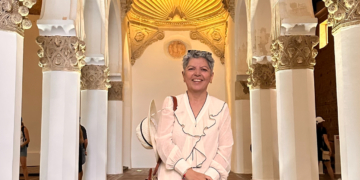In Islam, death & burial are regulated by sharia & are linked to the redemption of the soul. The body of the deceased is integrated into the soil and it is the soul which is left. The grave is just the first stage of the journey of the soul into the hereafter
Hence name rauza e Munawwara or illumined tomb and not Taj mahal. That name became popular as a corruption of Mumtaz Mahal and Taj Bibi ka maqbara
It was built as a Paradisical tomb
Shariat laws were followed for acquiring of property. Due compensation given
The tomb complex was divided into two parts.
One was the religious and the other s cular and commercial.
Today they have been separated and thus we only see the love angle.
It was a deeply Sacred space.
The commercial part of the tomb complex was the Taj Ganj where the descendants of the artisans and craftsmen still live.
That their hands were cut is another myth.
Some were involved in construction of Red Fort in Delhi some in the tomb itself for inlay work contd longer
The secular/commercial space ends in the jilaukhana/forecort of the tomb seen here in photos before the main gateway
Since redemption is also linked to prayers not only a mosque but rooms called khaspura from where charity was distributed & hafiz e Quran stayed, are situated around the jilaukhana and inside ( behind toilet complex)
We now enter the religious space with words
“O SOUL, THOU ART AT REST. RETURN TO THE LORD AT PEACE WITH HIM, AND HE AT PEACE WITH YOU.”
There are 22 passages in all, including fourteen whole chapters, some of which are read out as part of the Islamic funeral ceremony itself.
Once inside the Sacred space, you walk across the charbagh Gardens and climb onto the sandstone platform
We enter the marble area via a narrow staircase which opens directly under verses the of Surah Yasin running around the tomb.
Surah Yasin is linked to death and redemption
The main entrance to the Rauza has verses from Surah Takwir on it
1-29
The northern door through which we exit the mausoleum has verses from Surah Al Inshiqaq ( the Rending Asunder)
“When the Sky is rent asunder
And hearkens to (the Command of) its Lord–and it must needs (do so)–“
Referring to Day o Resurrection



























